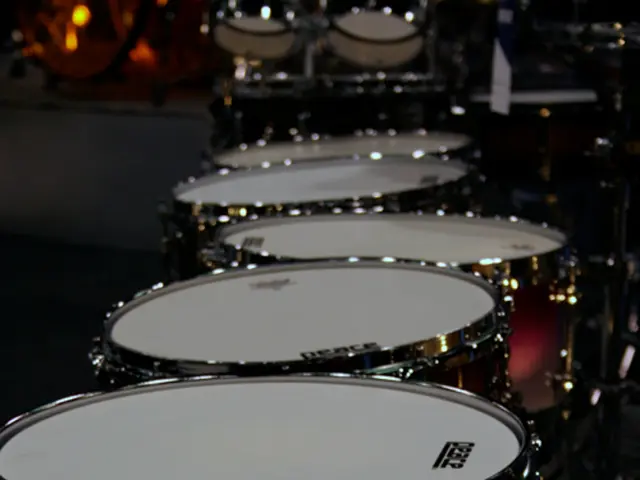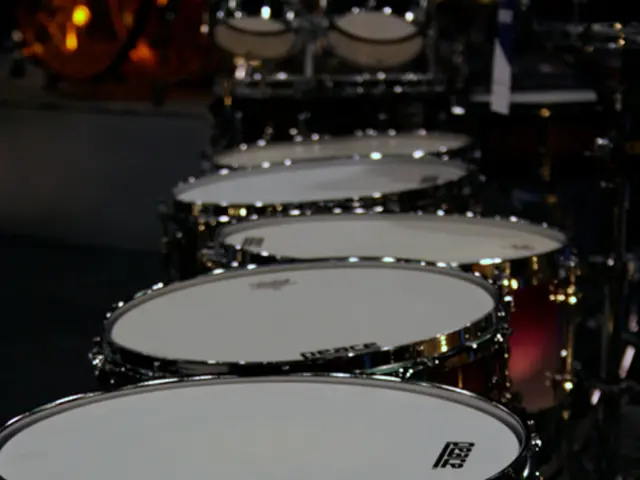Enhancing Participation in Election 2020: Catering to the American Population with Disabilities
Take Charge: Voting for Individuals with Disabilities
Are you in the dark about the impact of the election on the 38 million individuals with disabilities in the US eligible to vote? We've got you covered! Healthline Media recently invited Jack Rosen, a specialist in voter engagement from the National Disability Rights Network (NDRN), to shed light on the implications of the upcoming elections for people with disabilities. Here's what he had to say about healthy voting, accessibility issues, and ensuring fair treatment for this group.
The Hidden Giant: The Disability Voting Bloc
Over a quarter of the US electorate either has a disability or shares a household with someone who does, according to data from Rutgers University in New Brunswick, NJ. With more than 38 million people with disabilities getting ready to cast their votes, it's time to understand the questions and concerns surrounding their electoral participation.
What Is 'Healthy Voting' for People with Disabilities?
In a conversation with Healthline, Jack Rosen pointed out two essential aspects of healthy voting for people with disabilities:
- Empowerment: Voting gives individuals with disabilities a sense of belonging and community, especially essential during the current pandemic, when many have felt isolated.
- Influence: Voting provides an opportunity for people with disabilities to have a say in the policies that directly impact their health, such as access to healthcare, social security, and veterans' benefits.
Accessibility in the Age of Pandemic
While the pandemic has led to feelings of isolation for many people with disabilities, it has also resulted in some positive developments for accessible voting:
- Expansion of Voting Methods: Widespread adoption of mail-in and electronic voting has helped remove barriers that kept many from voting in the past.
- Removal of Previous Barriers: In various states, barriers to voting, such as the need for a notary for an absentee ballot request or having numerous witnesses, have been reduced.
However, while the expansion of vote-by-mail is a step in the right direction, it is not a solution for all the issues faced by individuals with disabilities. Rosen emphasized that it is crucial to ensure that mail-in ballots are accessible to those who are blind or have print disabilities.
The Fight for Accessible Voting: A Long Road Ahead
Although progress has been made in making voting more accessible, there is still much work left to be done. Rosen provided historical context, mentioning the Voting Rights Act of 1965 and the Help America Vote Act of 2002 as milestones in the journey toward accessible voting. Despite these advancements, over 60% of polling places surveyed were not fully compliant with the Americans with Disabilities Act (ADA), according to the Government Accountability Office.
Poll Worker Shortage and Closing Polling Stations:
When asked about the effects of the pandemic on the voting process for people with disabilities, Rosen identified a couple of concerns:
- Poll Worker Shortage: The shortage of poll workers may lead to insufficiently staffed polling stations, which could pose challenges for individuals with disabilities.
- Closure of Accessible Polling Stations: The closure of polling stations in nursing facilities, schools, and other accessible locations could further complicate the voting process for individuals with disabilities.
Coping with the Pandemic's Impact on People with Disabilities in America
In light of the pandemic's impact, people with disabilities have more reason than ever to be politically engaged. As Rosen put it, "We keep hearing the term 'pre-existing condition' thrown around when they talk about COVID deaths, and I want to push back on that idea because those are people with disabilities."
Action Steps for Volunteer Poll Workers
- Get Appropriate Training: Insist on receiving training in using accessible voting machines and assisting voters with disabilities.
- Ask Questions: During training sessions, ask questions about using an accessible voting machine and how to best assist individuals who are having trouble physically accessing the polling place.
- Follow Accessibility Protocols: If you are a volunteer poll worker and receive inadequate training or encounter issues related to accessibility, report them to the election protection hotline (866 OUR VOTE) or your state's Protection and Advocacy agency.
Accessibility Etiquette Rules for Poll Workers:
- Don't Make Assumptions: Never assume that someone with an intellectual disability is unable to vote.
- Respect Each Voter's Privacy: Refrain from questioning a person's need to use an accessible voting machine—everyone has the right to use one upon request.
- Provide Assistance Appropriately: If a voter requests assistance from the poll worker, that's acceptable, but it should not be an alternative solution to the lack of accessible equipment. Voters who are blind, for instance, have the right to vote privately, just like everyone else.
To participate fully in the upcoming elections, voters with disabilities require accessible polling places, trained poll workers, and the ability to cast their votes without facing unnecessary obstacles. As a concerned voter, it's essential to understand the unique challenges faced by individuals with disabilities and take action to promote fair treatment during the voting process.
- The major concern in the field of science and politics is the accessibility and fair treatment of individuals with disabilities in the voting process, especially considering the pandemic-induced shift towards mail-in voting.
- To ensure a healthy and inclusive voting environment, it's crucial to focus on aspects such as empowerment and influence as emphasized by Jack Rosen, advocating for the rights of individuals with disabilities in health, welfare, and general news matters.
- Mental health organizations and the fitness and exercise community can play a significant role in advocating for the needs of people with disabilities, particularly in addressing the isolation and accessibility issues that may arise during the voting process, as well as among the broader health-and-wellness community.







